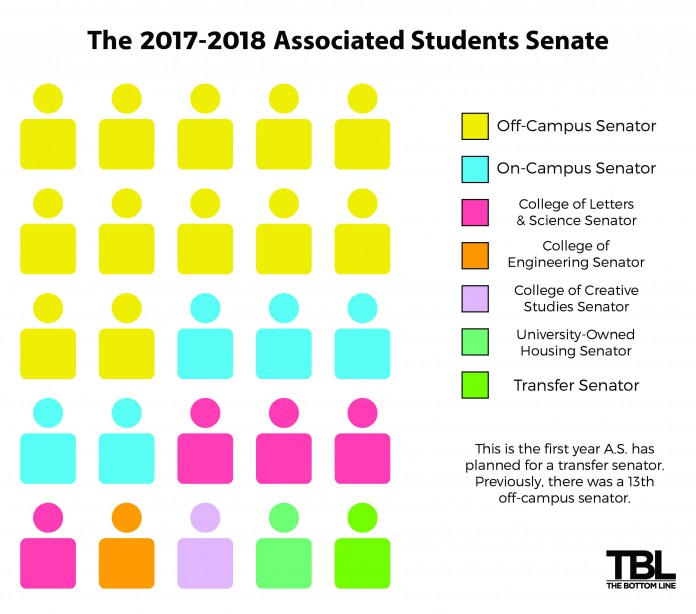
Gwendolyn Wu
Campus Beat Reporter
As Associated Students Elections madness sweeps the campus, many students are baffled about how elections work and why they matter.
At first glance, the University of California, Santa Barbara’s campus elections can seem like utter chaos. Fallen plywood advertisements litter campus lawns (the wind is nonpartisan); candidates and their supporters add identical Facebook profile pictures; and parties table in the Arbor, handing out flyers and t-shirts. What may seem like a circus is actually a highly-organized process that begins each year at the end of winter quarter.
All undergraduate students are automatically registered to vote in A.S. Elections. Students vote for five executives: President, Internal Vice President (A.S. relations and Senate chair), External Vice President for Local Affairs (Isla Vista and Santa Barbara County relations), External Vice President for Statewide Affairs (state-level relations) and the Student Advocate General (nonpartisan student rights advocacy).
They also vote for senators to represent each housing- and college-based constituency: five on-campus senators, 12 off-campus senators, one university-owned housing senator, four College of Letters & Sciences senators, one College of Engineering senator and one College of Creative Studies senator. Additionally, a transfer senator will be elected for the first time for the 2017-2018 academic year per a constitutional amendment.
Each year, students also vote on different student fee lock-ins and increases, and fees that win a majority of the vote will be applied to the student fee charge on BARC at the beginning of each academic year. A.S. boards, commissions and units — of which there are currently over two dozen — can apply for a lock-in fee, as can other campus entities under the “student services” umbrella designation.
Under the fall quarter Elections Code revamp, this year students will vote using the Single Transferable Vote (STV) system. When voting online, they will be asked to rank their candidate choices from first to last, at which point students can also add write-in candidates to their ballot.
A.S. Elections Board encourages students to include every candidate in their rankings, to ensure the democratic process is maintained. Winners in each category are decided using the Droop quota, which takes the number of valid votes cast, divides it by one higher than the number of seats available in the position and adds one more to that figure.
If one candidate reaches the minimum votes required for election, all of his or her extra votes will be allocated to each voter’s second-choice candidate. Should no candidate reach the minimum, the candidate with the least number of votes is dropped from the race and those votes are also redistributed among each voter’s second choice. The same process repeats if the second choice candidate reaches the minimum or is dropped, until the vote is exhausted.
For the 2016 A.S. Elections, three political parties are running candidate slates: Campus United, Peer Action Coalition and The Response. However, students don’t have to worry about their tuition and fees going toward the campaigns for parties they don’t support. Campaigns are entirely funded by the students running, whether by personal funds or fundraisers. A party can spend up to $6,000 total on campaign materials, while nonpartisan Senate and executive candidates can spend up to $400 or $600 respectively on their personal campaigns.
Candidates are not allowed to accept donations from individuals or groups outside of campus or from those on campus looking to influence the election’s outcome. They are also held to strict standards for campaigning. Elections Board only allowed candidates to begin social media and campus campaigning on Sunday, April 10, at 8 PM, and door-to-door campaigning on Thursday, April 14.
Campaigns are furthermore prohibited from using negative campaign tactics against one another. Elections Board imposes financial punishment if a candidate or his or her team is caught violating any of these terms.
Voting opens on GOLD Monday, April 18, and ends on Thursday, April 21, at 4 p.m. Traditionally, the tabulated results are shown in the University Center HUB from 6 to 8 p.m. Thursday evening, but with the new voting system implemented this year, Elections Board will be running the vote tally in real time.
CORRECTION: A previous version of this article stated that a transfer student senator will be elected this fall. However, a transfer senator will be elected for the 2017-2018 academic year.











Comments are closed.